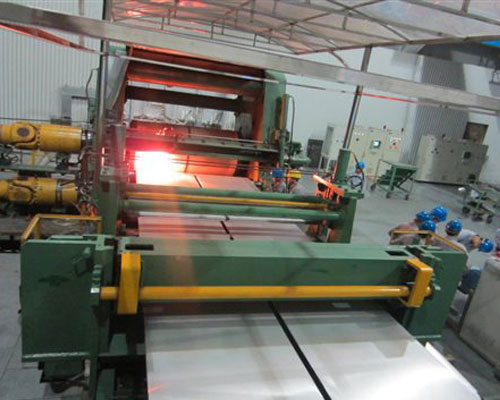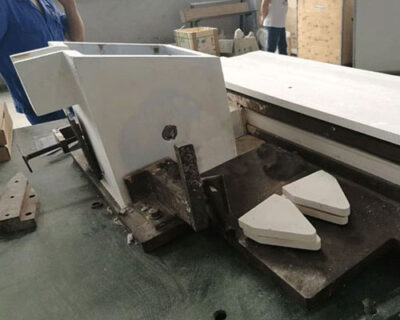Casting and rolling is an important step for aluminum cast-rolled products. However, with the expansion of its use, higher requirements have been placed on the surface quality, internal quality, and shape of cast-rolled sheets. In this case, we have conducted a follow-up study on the entire production process of cast-rolled coils, and at the same time analyzing the process system and technical management, and have a preliminary understanding of the rules and causes of the quality defects of cast-rolled plates.
Hot strip is a common defect in casting and rolling production. Its causes are:
- Due to the high melt temperature, the temperature distribution along the transverse direction in the cast-rolling zone is uneven, and the length of local liquid pockets is too long, sometimes larger than the length of the cast-rolling zone.
- The liquid level of the front box is too low and the static pressure is small, so that the local melt supply in the mouth cavity is insufficient. This local melt cannot contact the roll surface, and the melt cannot be sufficiently cooled in the casting and rolling zone, and the crystallization process cannot be completed.
- The casting-rolling speed is too fast, so that the liquid cavity is elongated, and the crystallization process has not been completed in a certain local area of the melt.
- Excessive amounts of graphite results in better lubrication on the surface of the roll, resulting in good melt fluidity and easy generation of hot spots.
In view of the causes of the tropics, attention should be paid to controlling the melt temperature, front box liquid level, casting speed and graphite consumption during operation.

The severe tropics cause holes in the board. The reason for the holes is: the hydrogen content in the melt is too high, and the gas is mixed into the nozzle during the casting and rolling process.
In view of the causes of holes, the following precautions must be done:
- Control the casting-rolling parameters to prevent holes caused by the hot zone.
- Strengthen smelting, degassing and slag removal, so that the hydrogen content is below 0.15ml/100gAl.
- Reduce the temperature of the melting furnace and the front box as much as possible to reduce the gas content.
- The casting nozzle material is fully dry.
AdTech specializes in solving the problems in the aluminum casting process. It provides online degassing unit and filtration equipment, casting launders, flow control series, casting nozzle plates and other refractory materials for aluminum foundries, which can help aluminum plants to cast qualified products.

